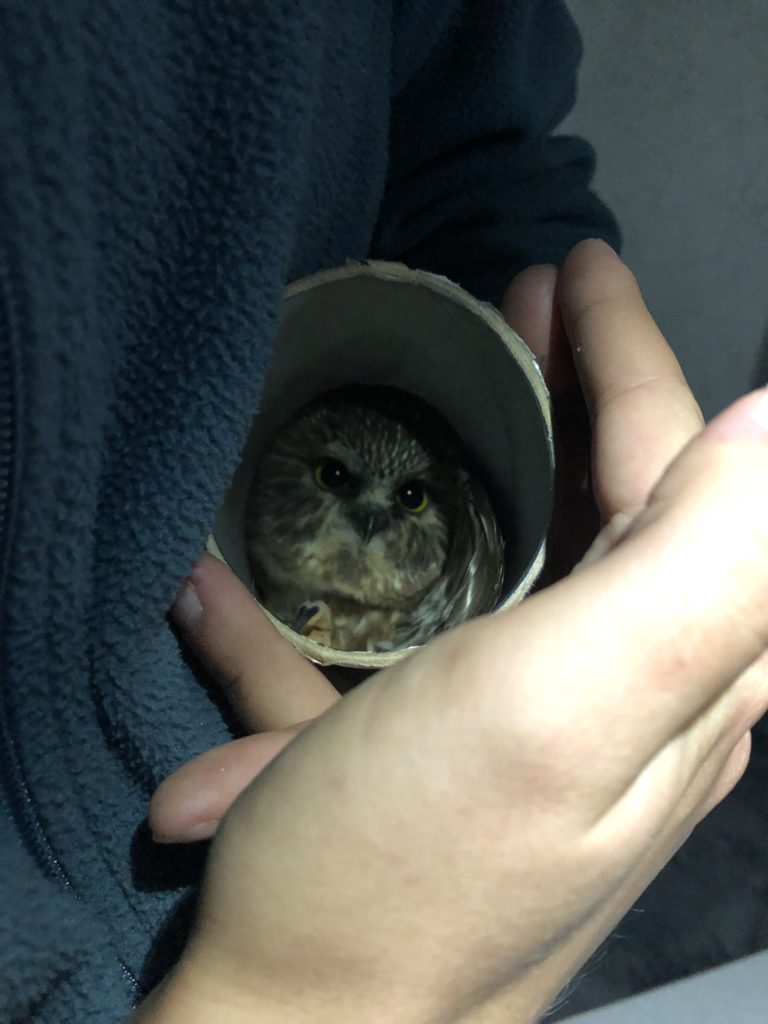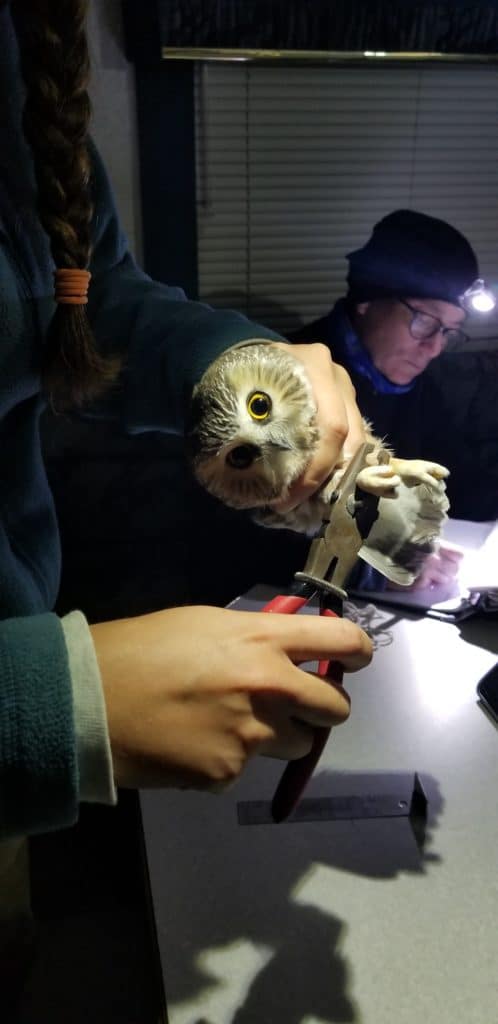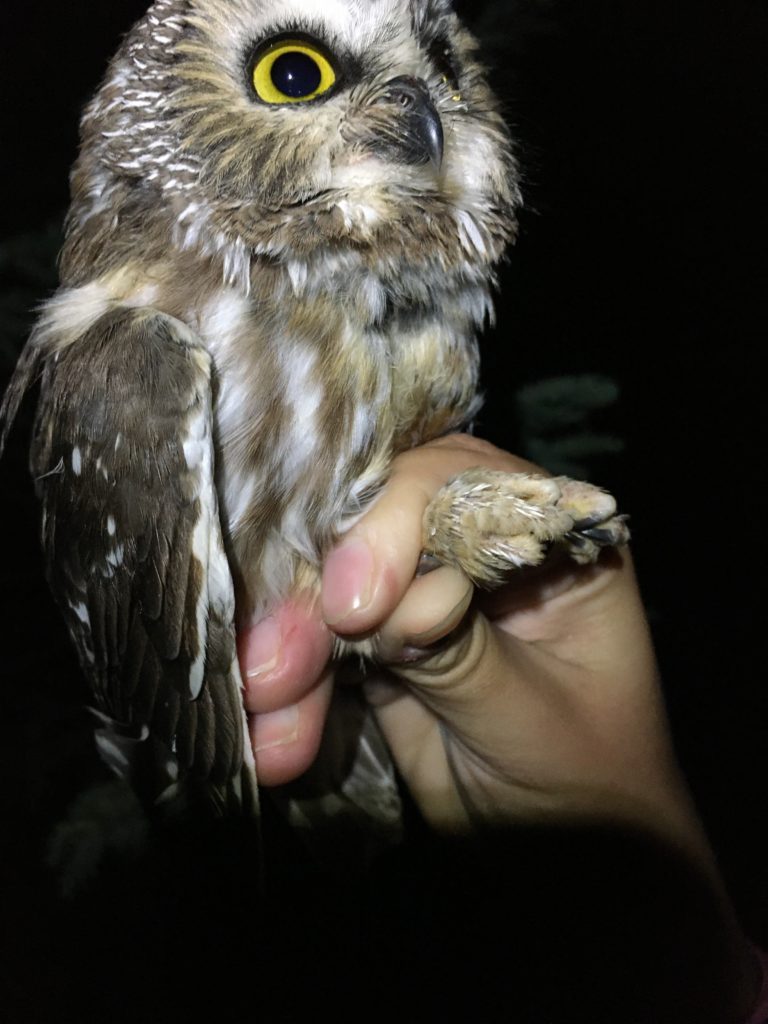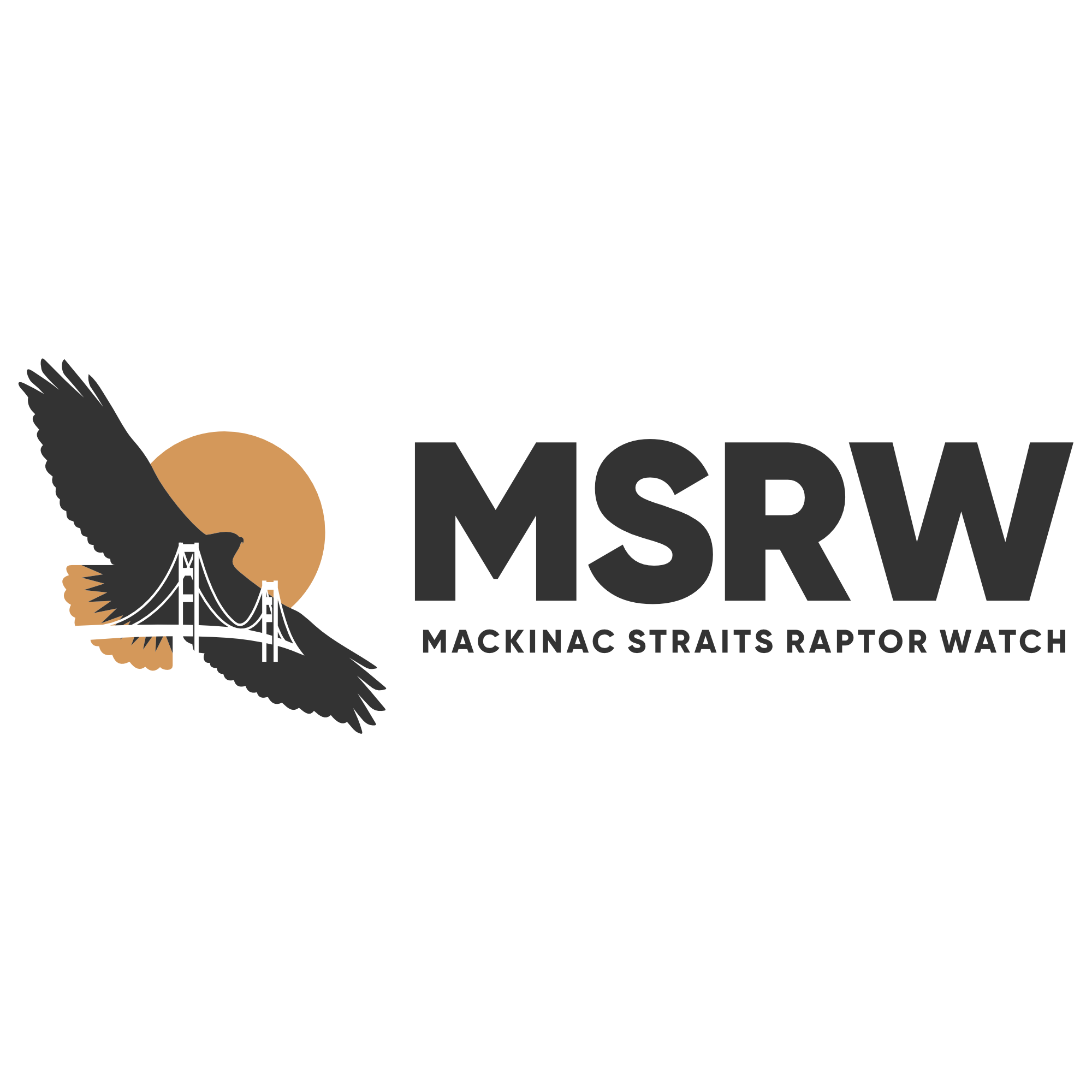As bird banders, the most important thing to us besides our own safety is the birds’ safety. We do absolutely everything we can to minimize any stress or harm to the birds. One facet of this is to reduce the amount of time we have the birds, from first capture to release, and especially the amount of time we have them in the hand for processing. Typically from start to finish, we can band and process a saw-whet in 60 seconds.

The first step in processing a saw-whet is to weigh the bird. We transport and hold our saw-whets in Pringles cans – often a visitor’s favorite and most memorable takeaway from seeing owl banding. Pringles cans are not only cheap and easy to acquire (and a good excuse to eat a lot of Pringles!), but saw-whets fit perfectly into the cans. As cavity nesters, saw-whets are used to being confined to small spaces and feel comfortable and relaxed in the cans, as opposed to a bag that you may use for holding a songbird for banding. So we weight the owl while it’s in the can, and then we remove the owl from the can, and re-weigh the can to get the final weight of the owl.
The second, most important step after weighing, is to band the bird! We always do this step right away, because the band is the most important part, as it identifies that bird. That way, if the bird manages to wiggle out of grasp and escape while we’re taking measurements, at least it already has its band on and we have, at minimum, the band number and weight for that bird. Bird bands are light-weight, aluminum ” bracelets” that we gently close around the owl’s legs, and which do not harm the owl. Each band has a 9-digit unique identification number that is specific to that bird, and is regulated by the Bird Banding Lab through the US Geological Survey.

Next, we age and sex the bird. A full course on aging was posted by Nancy in a previous blog, so go check that out!
Sexing Northern Saw-whet Owls is done by a combination of wing chord and weight. The males are significantly smaller than the females, and saw-whets that measure in the middle we designate as “unknown” sex. Check out this page from Project Owlnet, which includes a size boundaries chart for sexing, using data from known-sex individuals.
The next step is to check for molt, on the body and legs of the owl. To check on the body, we blow on the flanks, just under their wings and look for pin feathers. A pin feather is also known as a “blood feather,” and it’s a developing feather just growing in on a bird. It’s important to know the timing of molt on these owls, as it affects their migration timing. During our peak time of catching owls for approximately the middle two weeks of October, nearly all of the owls we captured had at least body molt. Now that we are into the first week of November, not nearly as many of the birds are in molt. Seems like a lot of them have already finished their molt for the fall season.

Last, we use a specialized ruler with a stopper on the end to measure the owl’s wing. We take what is a called a “wing chord” measurement – meaning that we measure the wing in its natural, slightly curved state rather than completely flattening the wing. This measurement is useful for determining the owl’s sex. Then, we measure the length of the tail as well.
After the bird is weighed, banded, aged/sexed, and measured (all of which is called “processing” a bird), we release the owl. We do this by placing the owl on a low tree branch, on the edge of the protection of the stand of trees by our banding trailer. This way, the owl is protected from any possible predators as it takes a minute to get readjusted to its new bird bling bracelet, and take off once again on its migration route.
Though the migration seems to have slowed down and we’ve had some nights that were too rainy/windy to band, we’re still catching some migrating saw-whets coming through.
Species capture totals September 18th through November 2nd:
Northern Saw-whet Owl: 617
Long-eared Owl: 10
Barred Owl: 2
Eastern Whip-poor-will: 1
Ruffed Grouse: 1
-Kandace Glanville, assistant owl bander

